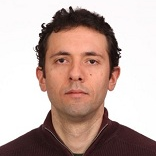Remote Sensing for Characterization, Monitoring and Early Warning of Natural and Engineered Slopes
A special issue of Remote Sensing (ISSN 2072-4292). This special issue belongs to the section "Remote Sensing in Geology, Geomorphology and Hydrology".
Deadline for manuscript submissions: closed (30 April 2023) | Viewed by 5934
Special Issue Editors
Interests: landslides; slope monitoring; radar interferometry; engineering geology; slope stability; rock and soil mechanics
Interests: landslide; rock mechanics; rock mass; monitoring; field survey; remote survey; UAV photogrammetry; rockfall risk assessment
Special Issues, Collections and Topics in MDPI journals
Special Issue Information
Dear Colleagues,
Remote sensing has become a commonly used tool for assessing and mitigating the risks associated with landslides and underperformance of engineered slopes. During the last few decades, a wide variety of groundbreaking sensors and data processing techniques (e.g., radar interferometry, UAV-based photogrammetry, aerial/terrestrial lidar, etc.) have been introduced to investigate potential and ongoing slope failures of different type and state of activity. This has made it possible to generate very large and detailed data sets, which offer the opportunity to greatly improve the understanding of landslide and slope failure processes, both in space and time. Applications typically focus either on tracking the trends of slope surface displacement or on rigorously mapping morphological/structural features of the soil/rock mass that may give indications about the possible mode and size of instability. In this regard, remote sensing provides a robust framework for data acquisition for topographic and geological characterization; monitoring of changes at the slope surface that provides insight into slope deformation mechanisms and kinematics; and the development of early warning protocols and trigger action and response plans (TARPs). In recent years, practitioners and researchers have been working towards taking advantage of the full potential of remote sensing on these three fronts. While remote sensing for early warning has become a well-established end goal for managing risks associated with natural and engineered slopes, integrating slope characterization and enhanced definition of failure mechanisms and kinematics is proving to support the business case for deploying remote sensing technologies.
This Special Issue is aimed at, but not limited to, research papers illustrating the results of integrated remote sensing campaigns that allowed gaining crucial insights into the dynamics and fundamental characteristics of landslides and potentially unstable slopes in general. Papers describing the experimental use of new sensors and data processing techniques are also greatly welcomed, as well as papers conjugating the results of remote sensing campaigns with numerical modelling of landslide processes. We also encourage papers describing practical applications of novel remote sensing techniques. Emphasis may be put on a wide range of topics and applications, including slope displacement monitoring, acquisition and advanced processing of high resolution point clouds, automatic detection of rock mass discontinuities and related properties, rock mass quality assessment, digital image correlation techniques, quantification of depletion and accumulation rates related to landslide activity, estimation of landslide volume and slip surface depth, retrieval of the runout behavior of past landslides, etc.
Dr. Renato Macciotta
Dr. Tommaso Carlà
Guest Editors
Manuscript Submission Information
Manuscripts should be submitted online at www.mdpi.com by registering and logging in to this website. Once you are registered, click here to go to the submission form. Manuscripts can be submitted until the deadline. All submissions that pass pre-check are peer-reviewed. Accepted papers will be published continuously in the journal (as soon as accepted) and will be listed together on the special issue website. Research articles, review articles as well as short communications are invited. For planned papers, a title and short abstract (about 100 words) can be sent to the Editorial Office for announcement on this website.
Submitted manuscripts should not have been published previously, nor be under consideration for publication elsewhere (except conference proceedings papers). All manuscripts are thoroughly refereed through a single-blind peer-review process. A guide for authors and other relevant information for submission of manuscripts is available on the Instructions for Authors page. Remote Sensing is an international peer-reviewed open access semimonthly journal published by MDPI.
Please visit the Instructions for Authors page before submitting a manuscript. The Article Processing Charge (APC) for publication in this open access journal is 2700 CHF (Swiss Francs). Submitted papers should be well formatted and use good English. Authors may use MDPI's English editing service prior to publication or during author revisions.
Keywords
- Landslides
- Slope Monitoring
- Slope Stability
- Engineering Geology
- Rock and Soil Mechanics
- Radar Interferometry
- Photogrammetry
- Point Cloud
- UAV
- Risk Analysis






